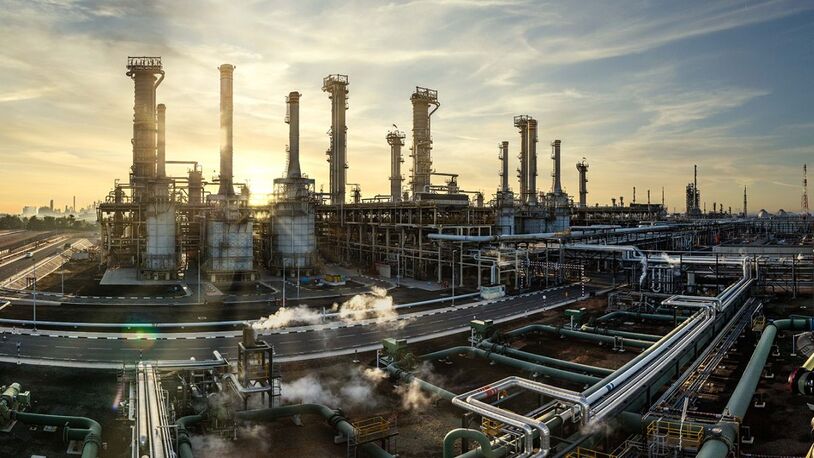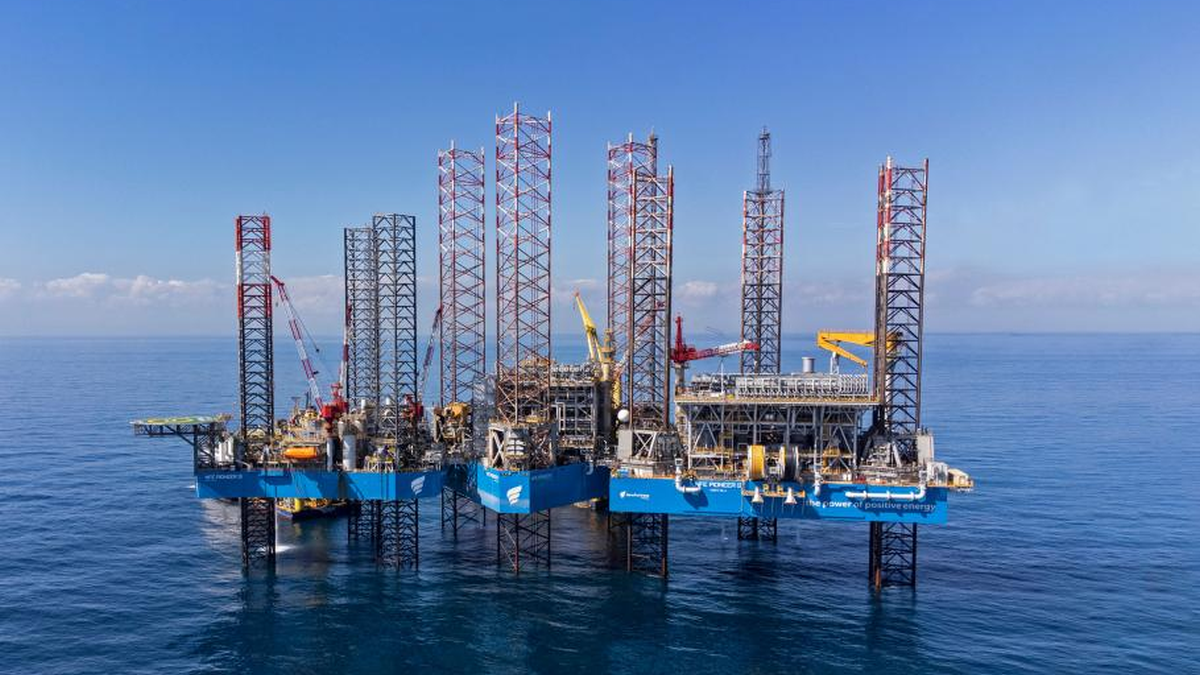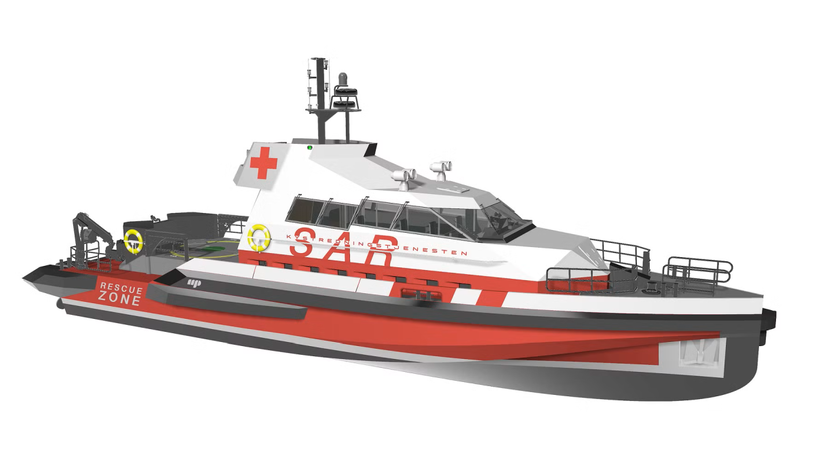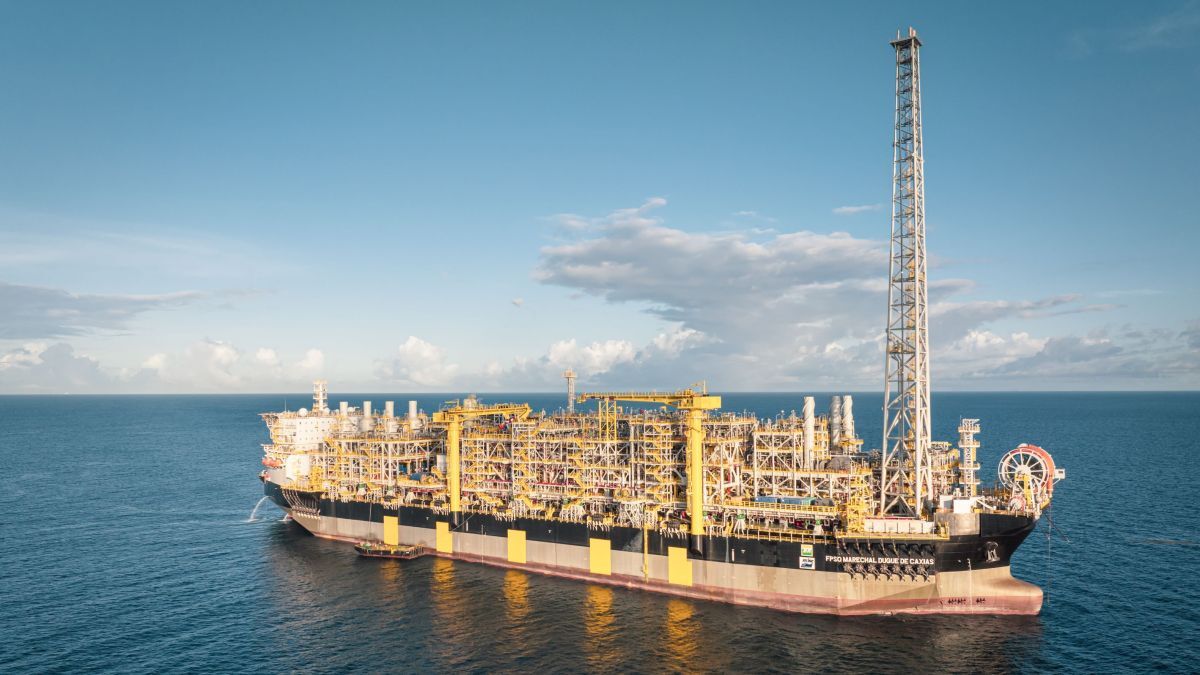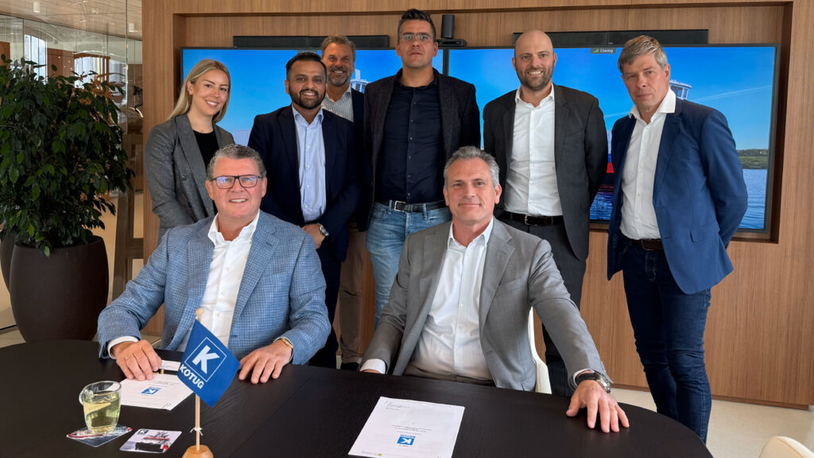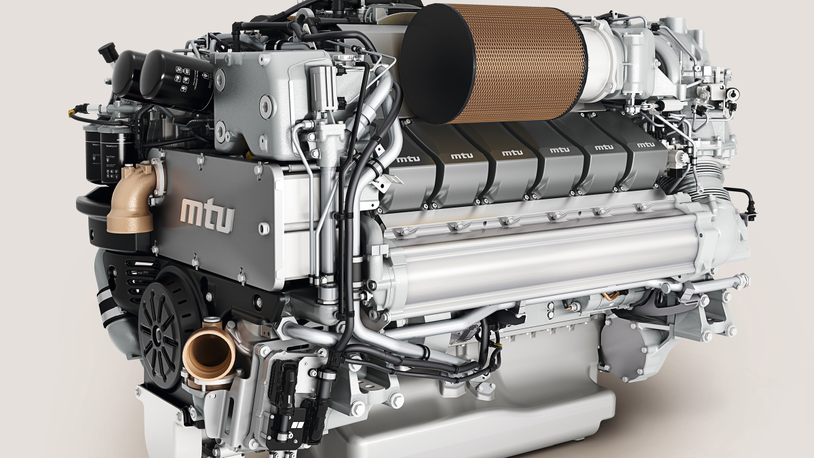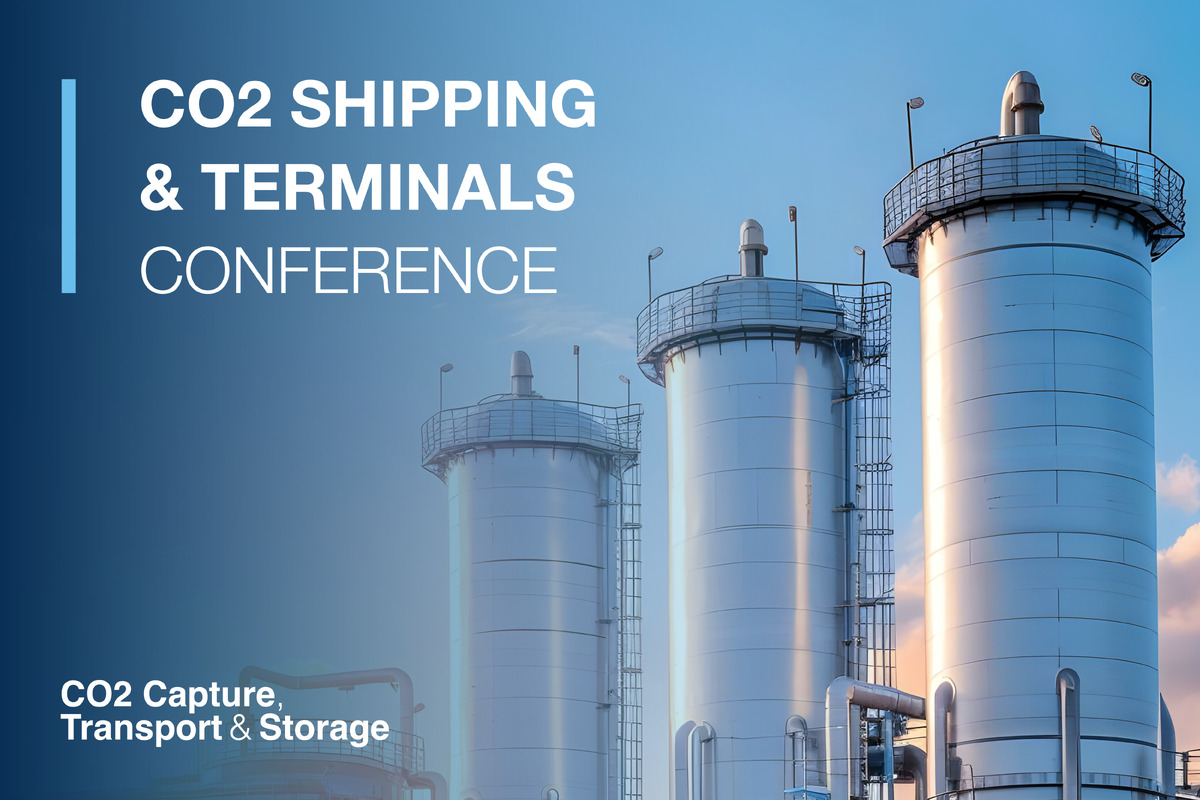Business Sectors
Contents
CS21: China’s home-grown power player
Drawing on almost 50 years’ experience in medium speed marine engine R&D, SMDERI started to develop the CS21 design in conjunction with German specialist FEV in 2008. The project was commissioned by the state-owned China Shipbuilding Industry Corporation whose CSIC Diesel Power embraces a number of enginebuilders; SMDERI is also a member of the CSIC organisation.
In developing a product that fully addressed the demands of the domestic market, the designers sought high reliability, easy maintenance, low fuel consumption, a competitive cost and compliance with IMO Tier II NOx emissions regulations.
Exploiting common rail fuel injection technology, Miller timing and an advanced turbocharger, the resulting 210mm-bore x 320mm-stroke design will cover a power range from 1,200kW to 2,070kW with in-line six- to nine-cylinder models for propulsion (Chinese river, coastal and fishing vessels) and genset drives for deepsea tonnage. A family of larger-bore engines and a dual-fuel version sharing the same basic features as the CS21 are envisaged.
A prototype six-cylinder CS21 engine for genset applications headed the series and was certified by the China Classification Society in December 2011, meeting all development targets on the testbed. The six-cylinder model has a rated output of 1,320kW at 1,000 rpm with an overload rating of 1,452kW. The prototype reportedly delivered a specific fuel consumption of 185 g/kWh and a NOx emission rate of 8.01 g/kWh.
Testing included a 600-hour durability trial on generator load, during which the engine ran well with stable performance. Subsequent disassembly and inspection of key components such as crankshaft, pistons and rings, connecting rods, bearings, camshaft, cylinder heads and inlet and exhaust valves revealed what were described as very acceptable results. Having met the design targets, SMDERI and FEV are now validating the engine’s performance and reliability through field testing.
A single-cylinder engine testbed was also exploited to shorten development times, reduce costs and control potential technical risks. Turbocharger system matching, valve timing and fuel injection optimisation tests were carried out on the prototype six-cylinder engine. The combustion system parameters from the single-cylinder engine were transferred to the 6CS21 engine and the calibration fine-tuned.
A low manufacturing cost was sought by basing component supplies on Chinese sources, which fostered continuous and close communication with sub-contractors from the conceptual design phase. Suggestions from experienced suppliers were also taken onboard, such as the cylinder liner material and the method of integrating the main oil gallery into the crankcase: following a cost evaluation the gallery was realised by using a cast steel pipe instead of machining the crankcase.
Further benefits in cost reduction are anticipated in volume engine production through supply chain optimisation.
A ‘moderately’ modular design philosophy was pursued for easier maintenance while avoiding higher manufacturing costs and reducing complexity; a clean external appearance is another benefit. The cylinder unit is an example of modularity, combining the cylinder head, cylinder liner, water jacket, piston and connecting rod in one unit. These elements can also be separated for maintenance and pistons and connecting rods can be withdrawn together in-situ.
A front end box module on the engine incorporates an integrated water pump, oil pump, oil and water thermostats as well as bolted-on oil filters, the oil cooler and high pressure pump serving the common rail fuel injection system. Associated piping is integrated into the box, reducing the amount of pipework. The turbocharger and charge air cooler are mounted on top of the module.
An electronic control unit and engine monitoring box are arranged on the left side of the engine, viewed from the front end, and the common rail assembly is located on the right at the top of the crankcase.
The nodular cast iron crankcase integrates the intake charge air manifold and the main oil gallery, with a separate water jacket for each cylinder effecting liner cooling. There is no cooling water in the crankcase, avoiding cavitation and corrosion.
The main bearing caps supporting the underslung crankshaft are clamped by two hydraulically-tightened bolts from below and two hydraulically-tightened bolts arranged horizontally. The bearing load near the driving end is improved thanks to an additional bearing support. Good accessibility for assembly and maintenance is provided by large crankcase inspection windows installed on both engine sides.
Fully machined from a continuous grain-flow alloy steel forging, the crankshaft features two counterweights per cylinder, each hydraulically fastened with two bolts. A 100 per cent power take-off (PTO) transmission capability from the free end was taken into account in the design for engines with up to nine cylinders.
A shrink-fitted gear for driving the camshaft is located at the driving end of the crankshaft, while a vibration damper and gear for driving the pumps are bolted to a flange at the free end. Evaluating the torsional and bending behaviour of the crankshaft (including the layout of the torsional vibration damper) was based on a 1D crankshaft calculation. Determining the 3D dynamic load and the resulting multi-axial stress distribution on the crankshaft called for a subsequent dynamic simulation.
A forged alloy steel connecting rod of the well proven marine three-piece design was specified; its big end need not be dis-assembled when pulling the piston, and all the connecting bolts are tensioned using hydraulic tools. Piston cooling is effected by oil drillings extending through the connecting rod shank from the big end up to the piston pin bore.
Composite two-piece pistons are formed from a forged alloy steel crown and a nodular cast iron skirt, connected by four bolts. Cooling drillings in the crown and the large diameter fully-floating piston pin support the capability to withstand high peak firing pressures and engine power ratings. Two compression rings (the upper is chrome and ceramic plated) and an oil scraper ring are fitted in hardened grooves.
A thermo-mechanical finite element analysis was carried out to optimise the piston structure, and a dynamic simulation of piston secondary motion performed to estimate lateral displacement, tilting angle, contact forces and friction losses.
A nodular cast iron cylinder head secured by four hydraulic bolts houses two intake valves, two exhaust valves and a centrally located fuel injector. The intake and exhaust port shapes are optimised for a high flow coefficient, and the exhaust valves are served by water-cooled valve seats.
Made of special cast iron, the cylinder liner incorporates an anti-polishing ring at the top to inhibit the build-up of carbon on the piston crown. The upper area of the liner is cooled by a water jacket with integrated water- and intake manifold. Thermal analyses assessed the temperature field, stresses, deformations, high cycle fatigue and thermo-mechanical fatigue; gasket sealing and bore distortion were also optimised.
An eccentric shaft in the valve train enables the motion of the camshaft-driven valves to be modified to achieve higher performance at part load and facilitates variable Miller timing. The separate camshafts for each cylinder are bolted with bearing journals for easier assembly and maintenance.
ABB’s A-100 series turbocharger with a high pressure ratio (up to 5.8:1) was adopted to secure high efficiency, high reliability and a wide scope for engine matching. The compact, non-water cooled design incorporates an inner sliding bearing. CSIC owns Chongqing Jiangjin Turbo & Charger Machinery, ABB’s joint venture partner in ABB Jiangjin Turbo Systems.
Applying the Miller cycle in conjunction with variable inlet valve closing time optimisation and a higher charge air pressure achieved a lower compression and combustion temperature. The Miller cycle thus promotes a combination of low NOx emissions and fuel economy while also contributing to favourable soot and particulate emissions.
An electronically-controlled common rail fuel injection system is based on a high pressure pump with three plunger elements, yielding high efficiency and promising high reliability with system pressures up to 2,000 bar. The CR system facilitates adjustable rail pressures, injection timings and durations, fostering low emissions and fuel consumption over the load range.
The fuel injector is of a leak-free design and only a small amount of control volume returns to the fuel backflow, significantly improving the efficiency of the system, the designer reports. A fast response is also claimed for the injector, which is capable of attaining injection pressures up to 1,800 bar.
Good combustion was secured through a number of measures, including a high compression ratio, high boost pressure, high fuel injection pressure, short injection duration, limited peak firing pressure and flexible injection timing. MP
Related to this Story
Events
Reefer container market outlook: Trade disruption, demand shifts & the role of technology
Asia Maritime & Offshore Webinar Week 2025
Marine Lubricants Webinar Week 2025
CO2 Shipping & Terminals Conference 2025
© 2024 Riviera Maritime Media Ltd.



